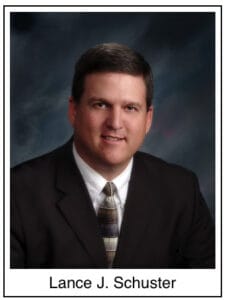 It was obvious as I looked down the fenceline that the fence was off. The surveyor had been out the day before and had used his instruments, accurate to within thousands of an inch, to survey the boundary between the two properties. The surveyor had placed his pin flags on the boundary described in the deeds to the adjoining properties. The fence was crooked and was off by a few feet here, a few feet there, and ten feet by the time it had traveled a quarter mile.
It was obvious as I looked down the fenceline that the fence was off. The surveyor had been out the day before and had used his instruments, accurate to within thousands of an inch, to survey the boundary between the two properties. The surveyor had placed his pin flags on the boundary described in the deeds to the adjoining properties. The fence was crooked and was off by a few feet here, a few feet there, and ten feet by the time it had traveled a quarter mile.
It was also obvious that the former owners of the adjoining properties had gone to great effort to fence the boundary. Old cedar posts had been carefully trimmed and placed in the ground. Barb wire had been stapled to the fence, but was now sagging and broken in many spots. Perhaps the boundary had been surveyed many years ago, but it was obvious that the old fence had been there for a long, long time.
The question now posed by the adjoining land owners, one of whom had just recently purchased his property, is where to put a new fence. If the old fence is to be replaced, should it go on the new surveyed boundary line, or should it go where the old fence was located? If the new fence is installed on the new surveyed boundary line, what to do about the ditches, the headgates, the trees, and even the well which will now be on the other side of the fence?
Idaho law recognizes that a fence that has been near the boundary of adjoining properties for a long period of time can become the property line. To establish property ownership under the doctrine of boundary by acquiescence, or “implied agreement,” there must be a disputed boundary, uncertainty or ignorance of the true boundary line, and an agreement establishing a boundary that is recognized between the parties. The payment of property taxes by the party seeking possession of the disputed land is not required. However, it does require that the parties agree to a boundary. Such an agreement may be established by direct evidence, or it can be inferred from the conduct of the parties or their predecessors in interest, including long acquiescence in an existing fenceline, especially where adjoining landowners treated it as fixing the boundary for such length of time that neither ought to be allowed to deny the correctness of its location.
In short, if the old crooked fence has been treated as the boundary between adjoining landowners for a long period of time, it becomes the boundary. The new fence should be placed exactly where the old fence was located.
– Lance J. Schuster is a lawyer at Beard St. Clair Gaffney. He and his wife raise kids and cattle on their small farm near Idaho Falls. He can be reached at 523-5171 or lance@beardstclair.com

